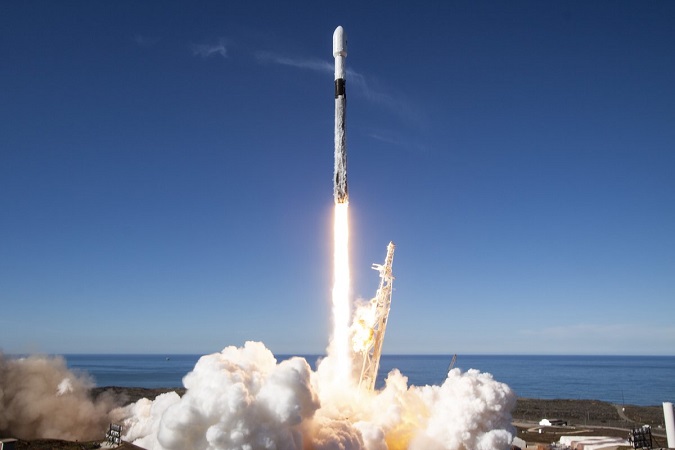On Monday, December 3rd at 10:34 a.m. PST, SpaceX successfully launched Spaceflight SSO-A: SmallSat Express. This was the first time SpaceX launched the same booster for a third time, and was also a complex mission that launched and deployed 64 small satellites in a series of six deployments. Among the satellites launched were 13 satellites for Asia-Pacific (APAC) companies or those with a presence here – including the first private satellite ever launched by an Indian company. Below is a list of all APAC-related satellites, and the countries they represent.
INDIA
ExseedSat 1
Developed by Indian space startup Exseed Space, ExseedSat 1 is India’s first private satellite in space. This 1U cubesat will be a demonstration satellite of the company’s satellite manufacturing services, and carries an amateur radio payload.
SOUTH KOREA
NEXTSat 1
With a mass of approximately 100kg, NEXTSat 1 is a microsatellite developed by the SaTReC (Satellite Technology Research Center) of KAIST (Korea Advanced Institute of Science and Technology). Besides testing a newly-developed satellite bus, the satellite carries two main payloads: an Instrument for the Study of Space Storms (ISSS), which can detect plasma densities; as well as an NIR Imaging Spectrometer for Star formation (NISS), which aims to study the life of stars.
K2SAT
Developed by KAISTfor the South Korea Air Force Academy, this 3U cubesat carries an on-board camera for imaging, and a voice repeater.
SNUSAT 2
SNUSAT 2 is the third satellite developed by the Seoul National University, and is a 3U Cubesat with wide angle and high resolution cameras for early disaster monitoring. The satellite also carries a star tracker. Its predecessors, SNUSAT 1 and 1B, were launched in 1998.
SNUGLITE
Also built by the Seoul National University, SNUGLITE is an educational 2U cubesat for amateur radio communication training. It also carries a dual-frequency GPS receiver and a magnetometer to measure the Earth’s magnetic field.
VisionCube 1
Developed by the Korea Aerospace University, VisionCube 1 is a 2U cubesat meant for scientific research. The cubesat carries a multi-anode photon multiplier tube(MaPMT), a camera, and a real-time image processing engine, and will be used to obtain images of Transient Luminous Events in the upper atmosphere.
AUSTRALIA
BRIO
A 3U Cubesat, BRIO was built by US-based SpaceQuest for Australian company Myriota, with the primary mission of testing an advanced RF Transceiver developed by Myriota. Myriota is aiming to provide low-cost satellite-based IoT, and is doing this using a new communications protocol based on Software Defined Radio (SDR).
Centauri-2
Another Australian IoT company, Fleet Space, recently launched two cubesats using Rocket Lab’s Electron vehicle and one using India’s PSLV rocket. This launch sees the 3U Centauri-2 satellite being launched, to accompany Centauri-1 launched by the PSLV last week.
RAAF M1
Developed by the University of New South Wales for the Australian Defence Force Academy, Royal Australian Air Force, this 3U cubesat carries an AIS/ADS-B payload to track maritime vessels and aircraft, as well as a passive radar system to track LEO satellites. To support these, the satellite will also test a new Software Defined Radio payload and will test the operations of a government space asset.
THAILAND
KNACKSAT
KNACKSAT (KMUTNB Academic Challenge of Knowledge SATellite) is the first entirely Thai-built satellite. Developed by King Mongkut’s University of Technology, the 1.3kg, 1U Cubesat carries an amateur radio payload as well as a magnetic torque de-orbiter.
SINGAPORE
Audacy 0
Audacy is a satellite data relay company headquartered in the US, but with quite an active presence in Singapore, where it is building a teleport. Its first demonstration satellite Audacy 0 is a 3U Cubesat that will test its user terminal and ground station, and carries a Ka-band satellite radio designed and built by the company.
KAZAKHSTAN
KazSTSAT (Kazakhstan)
Built by Surrey Satellite Technology Ltd (SSTL), this 50kg Earth Observation microsatellite was developed for Ghalam LLP, a Kazakhstan-based Airbus joint venture. The satellite will provide 22-m resolution multispectral imagery that will be used primarily for disaster monitoring. During the development of the satellite, Kazakh engineers received training by SSTL.
KazSciSat 1 (Kazakhstan)
Another satellite developed for Ghalam LLP, this 3U cubesat is a scientific satellite with a magnetometer to measure the Earth’s magnetic field.







